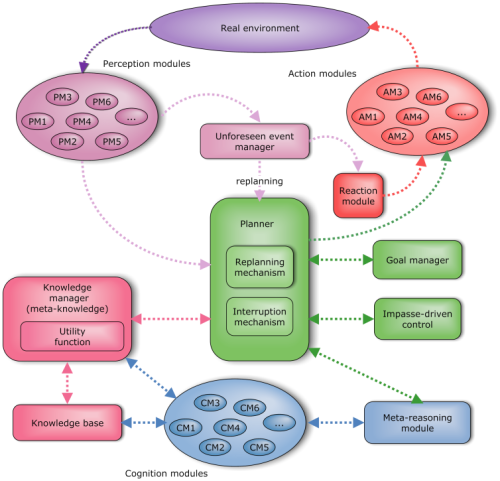Cognitive Architecture Framework
Technical cognitive architectures define processes that emulate certain aspects of intelligent behaviour, thereby transferring human behaviour to robots or inanimate agents. The CoTeSys cluster houses many groups developing software for cognitive robots; since these projects have now reached a certain maturity, the need for a tool that facilitates knowledge and code exchange within the cluster is arising. Our solution to this problem is to design a common cognitive architecture framework. It will serve as a template into which different CoTeSys groups can plug their perception, cognition, or action components to enable intelligent behaviour in diverse hardware and task setups.
By framework we mean a software system that can be used to instantiate with minimal effort different cognitive architectures tailored to the hardware, environment and tasks in question. Hence the user should be able to plug in their own software modules without much adaptation, while at the same time making use of the management and external modules already provided by other groups.
The conceptual architecture schema shown above defines the envisioned perception-cognition-action loop. It is build around an architecture core comprising a set of management modules and a variable number of functional modules. The cores function is to integrate the external modules, to coordinate their activities and to provide them with feedback.
People
Acknowledgements
This work is funded within the Excellence Cluster Cognition for Technical Systems (
CoTeSys) by the German Research Foundation (
DFG).
